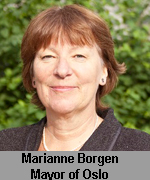
City Mayors is a leading international source for urban statistics  FRONT PAGE Site Search About us    Worldwide | Elections | North America | Latin America | Europe | Asia | Africa |                           |
Urban statistics
|
| 2018 Earnings, Prices & Wealth Survey ||| Introduction ||| The most expensive cities ||| The richest cities ||| The most powerful cities ||| The Big Mac Guide ||| |
||
 |
 |
|
July 2017: The mayors of the world’s 25 largest cities are each responsible for more people than most national prime ministers. For example, London, ranked 23rd in the world, has more residents than nations like Paraguay, Denmark, New Zealand or Ireland, and if Shanghai, globally the largest city, was a country it would rank just below Australia but above Chile, the Netherland or Greece. The combined population of the world’s 19 megacities - cities with more than 10 million inhabitants – is greater than that of Brazil, the world’s fifth largest country. INTRODUCTION ||| TABLES
World's capital cities
and their mayors
Research: More than 90 of the world's most important capital cities are governed by elected mayors – either directly elected or chosen by the city
 |
 |
|
 |
 |
|
July 2017: The table lists the largest cities in the world with women mayors. Of the world’s largest 300 cities only 25 are governed by women, although a number of European capitals, including Rome, Madrid, Paris, Warsaw and Stockholm, have women mayors. The world’s most powerful woman in local government is Yuriko Koike the Governor (Mayor) of Tokyo. Other influential female city leaders include the mayors of Sydney, Surabaya, Havana, Perth, Barcelona and Cape Town. MORE
The largest US cities:
Nine cities with more than one million people
New York City and Los Angeles grow fastest
29 May 2013: The US has nine cities with populations topping one million. New York City, with more than eight million residents, is by far the largest US city. Los Angeles, in second place, has a population of just below four million people. Both Chicago and Houston have populations of more than two million. Other cities with more than one million citizens include Philadelphia, Phoenix and San Diego. | Introduction | Largest 1 - 100 | Largest 101 - 200 | Fastest growing | Fastest shrinking |
A comparison of UK
and European cities
21 February 2013: Almost 13 per cent of the UK population live in London. With the exception of Vienna, no other major European capital city is home to such a high proportion of its country’s citizens. Recent research by City Mayors shows that 20.2 per cent of Austrians live in Vienna, 12.9 per cent of Britons call London their home, while 12.4 per of Norwegians reside in Oslo. Helsinki, Copenhagen and Brussels also house more than ten per cent of their respective national populations. But less than five per cent of the people of France, Germany, Poland and Italy live in their respective capital cities. More
The 10 most expensive cities
according to Mercer, UBS, ECA and EIU
|
Rank
|
Mercer (2013)
|
UBS (2012)
|
ECA (2012)
|
EIU (2013)
|
|
1
|
Luanda | Oslo | Tokyo | Tokyo |
|
2
|
Moscow | Zurich | Oslo | Osaka |
|
3
|
Tokyo | Tokyo | Geneva | Sydney |
|
4
|
N’Djamena | Geneva | Nagoya | Oslo |
|
5
|
Singapore | Copenhagen | Zurich | Melbourne |
|
6
|
Hong Kong | New York City | Yokohama | Singapore |
|
7
|
Geneva | Luxembourg | Bern | Zurich |
|
8
|
Zurich | Stockholm | Stavanger | Paris |
|
9
|
Bern | Caracas | Basel | Caracas |
|
10
|
Sydney | London | Kobe | Geneva |
Urban population growth
between now and 2030
7 August 2012: In 2008, the world reached an invisible but momentous milestone: For the first time in history, more than half its human population, 3.3 billion people, lived in urban areas. By 2030, this is expected to swell to more than five billion. Urbanisation has already surpassed the 90-per-cent mark, not only in city states like Singapore and Kuwait, but also in Belgium, Venezuela, Uruguay, Argentina, Israel and the UK. In the US, where for the past 100 years the majority of people have been living in cities, more than 82 per cent of the total population now reside in urban areas. More
More than 63 million people
live in Japan's largest cities
2 May 2012: Japan has 12 cities with populations of more than one million people. Almost 100 million Japanese, or 78 per cent of the country’s total population of 127.4 million, live in urban areas. The total population of Japan’s largest 103 cities amounts to 63.9 million or just over half of all Japanese. More
US Census: Latino population
spreading across the country
17 April 2011: All the initial swathe of data from the April 2010 Census in the USA has now been published (end March 2011). It confirms the trend of a substantial increase in the Latino population and of the movement of this group of people across the country. The Hispanic/Latino population and the number of people categorising themselves as single-race Asian both increased by 43 per cent during the decade. Latino people now make up 16 per cent of the population and Asian people five per cent. Black people constitute 13 per cent of the population. More
USA Census: Rust-belt
cities are still shrinking
10 March 2011: Results from the April 2010 census in the USA are being published during March and April 2011. The administrators are under time pressure because the census is used to revise the allocation of seats in the US House of Representatives. After publication of half the data, the key trends are: Overall, the US population is growing by one per cent p.a. The Latino population is spreading across the country. The country is becoming more urban/suburban. The rust-belt cities are still shrinking. More
The largest cities in the world by
land area, population and density
With the merger of core cities, suburbs and satellite towns into large metropolitan areas, the very largest cities in the world have in fact become megacities, i.e. cities with more than 10 million people. The area comprising Tokyo and Yokohama is, with a population of between 33 and 35 million, the world’s largest megacity. The list of the world’s largest cities, by land area, is headed by New York Metro, with a total area of 8,700 square kilometres. Mumbai, with a population density of almost 30,000 people per square kilometre, is the world’s most crowded city. Kolkata (Calcutta), Karachi and Lagos follow behind. More
The world's largest cities and
urban areas in 2006 and 2020
For the foreseeable future, Greater Tokyo will remain the world’s largest urban area. In 2006, the Japanese capital and its surrounding towns are home to an estimated 35.5 million people. By 2020, it is forecast that this figure will have increased to more than 37 million. However below Tokyo, the ranking of the largest urban agglomerations will change between now and 2020. Mexico City, currently number two, will drop to fifth place, while Mumbai is forecast to move up from third to second position. Also on the way up among the top placed urban areas are Delhi, (up from 6th to 3rd), Dhaka (up from 10th to 4th) and Lagos (up from 14th to 7th). More
Currency movements main factor in deciding
ranking of most expensive cities in the world
29 June 2010: Angola's capital city Luanda has replaced Tokyo as the most expensive city in the world for US expatriates according to the latest Cost of Living Survey from Mercer. Tokyo is in second position, while Ndjamena (Chad) is now in third place. The survey's table of the world's 50 most expensive cities includes 10 from Africa. More
German-speaking cities occupy
top places in best-cities survey
26 May 2010: Vienna has again been named as the ‘best’ city in the world, with the Austrian capital’s perennial Swiss rivals, Zurich and Geneva, following close behind. Vancouver and Auckland retain last year’s joint 4th positions. Overall, German-speaking cities occupy six places in the top ten in this year’s Quality of Living Survey by Mercer Consulting. More
The most expensive and
richest cities in the world
22 August 2009: Oslo, Zurich, Copenhagen, Geneva, Tokyo and New York have emerged as the world's most expensive cities based on a standardised basket of 122 goods and services. When rent prices are factored into the equation, New York, Oslo, Geneva and Tokyo emerge as especially expensive places to live. The basket costs the least in Kuala Lumpur, Manila, Delhi and Mumbai. The newly introduced iPod index measure how long an employee would have to work to be able to afford the Apple MP3 player. More
Vancouver, Melbourne and Vienna
named world’s most liveable cities
9 June 2009: Vancouver, Vienna, Melbourne have again been named as the three ‘best’ cities in the world to live in and to visit. The survey by the London-based Economist Intelligent Survey (EIU) describes Vancouver as almost perfect with only petty crime and the availability of good-quality housing presenting any challenges. Similar research by Mercer Consulting puts Vienna in first place followed by Zurich and Geneva. More
Pittsburgh and Los Angeles
the most polluted US cities
17 May 2009: Six out of ten Americans live in urban areas where air pollution can cause major health problems. While a new report for the American Lung Association acknowledges substantial progress against air pollution in many areas of the USA, it finds nearly every major city was still burdened by air pollution. Despite America’s growing “green” movement, the air in many cities became dirtier during the past 12 months. The research names Pittsburgh, Los Angeles and Bakersfield as the most polluted US cities. More
New York, London and Paris rank
first in a new index of global cities
30 October 2008: Assembled by Foreign Policy alongside management consultants A. T. Kearney and the Chicago Council on Global Affairs think tank, the Global Cities Index is the latest in a series of ranking tables to consider the physical manifestations of globalisation’s urban pull across the world. While not perhaps as scientific as the standard GaWC rankings for World Cities, the inaugural index is a fascinating study of recent and on-going urban trends. More
Tokyo is number one among
the richest cities in the world
Greater Tokyo stands unrivalled in the world. For many years to come, the Japanese capital together with its surrounding urban areas will remain the richest and largest city in the world. Research published by PricewaterhouseCopper (PWC) in March 2007 places the Japanese capital at the top of the world’s richest cities between 2005 and 2020. In its own research on the world’s largest cities between 2006 and 2020, City Mayors also ranks Tokyo number one in the world. More
The capital cities of the world
Our list provides the capital cities of some 200 sovereign countries. Where available, we also provide population figures for the listed capital cities. More
Historic Cities - Living Cities
City Mayors' new series 'Historic Cities - Living Cities' features towns and cities of the 21st century, which have made significant historic contributions to urban development. Many of the cities, initially chosen for the series, are World Heritage sites or contain historic institutions and monuments, which have contributed to social, political, cultural and architectural achievements in Europe, the Americas, Asia and Africa. More
The 200 largest US cities
Most large US cities grow strongly. In 2003, more than 72 million Americans lived in the country’s 200 largest cities compared to 71 million three years earlier. Americans living in the country's 200 largest cities represent 24.8 per cent of the total US population of 293.6 million. Figures updated for 2005 show a population drift to US sunshine cities. More
Seven out of ten of America’s largest
cities are in states bordering Mexico
Phoenix has become the America’s fifth largest city. New York continues to be the nation’s most populous city, with 8.2 million residents. This was more than twice the population of Los Angeles, which ranked second at 3.8 million. Nearly a century ago, in 1910, each of the 10 largest US cities was within roughly 500 miles of the Canadian border. The 2006 estimates show that seven of the top 10 - and three of the top five - are in states that border Mexico. More
The fastest growing / shrinking American cities More
The largest urban areas in the world
The growth of urban populations in most countries of the world has lead to the creation of ‘super cities’. These are urban areas where the original core city has become part of an agglomeration that takes in neighbouring towns, new suburbs, dormitory towns or shanty settlements. More
The 500 largest cities in Europe
With a population of more than eight million, Moscow, Russia’s capital city, emerged as the largest European city in City Mayors' survey of Europe’s 500 largest towns and cities. London, the UK capital, is placed second, followed by St Petersburg, Berlin, Madrid and Rome. More
The 30 largest cities in Canada
More Canadians prefer to live in towns and cities. More
The 100 largest cities in Brazil
Brazil has 22 towns and cities with more than half a million people. Some of them have many more. Some 15.2 million people live in the urban area around and including the city of São Paulo. For Rio de Janeiro, the figure is 9.6 million. Of Brazil's 155 million people, 115 million live in cities. Some 67 million Brazilians live in the country's 100 largest cities. More
The 200 largest cities in the UK
With a population of more than seven million people, London, the UK's capital, has no equal among its UK peers. Britain's only other city with a population of more than one million is the West Midland city of Birmingham. More
The 300 largest cities in Germany
Germany is a country of thousands of medium-sized towns and cities. Only three cities, Berlin, Hamburg and München (Munich), are Millionenstädte - cities with a population of more than one million. Another nine German cities have a population of more than 500,000 people. Some 51 million people – the equivalent of 63 per cent of Germany’s total population - live in the country’s 5,700 towns and cities. The population of Germany’s 300 largest cities amounts to almost 37 million or 45 per cent of all people living in the country. More
The 50 largest cities in France
The fact that Paris is the only French city with a population of more than one million inhabitants underlines the continued political economic and cultural dominance of the French capital. More
The largest urban areas in France
Some 22.8 million French men and women, or 38 per cent of the French population, live in the country’s 20 largest urban areas. More
The 50 largest cities in Spain
Some 15.5 million people, or 38.3 per cent of Spain’s population of 40.5 million, live in the country’s 50 largest cities. Only two of Spain’s cities, the national capital Madrid and Barcelona, have populations of more than one million. More
The 40 largest cities in Italy
Thanks to the success of independent city states in the Centre and North such as Venice, Florence, Siena, Genoa, and Milan, Italy became a flourishing and civilised country of trade and the arts. More
The 35 largest cities in India
In 2001, India had 35 cities / urban areas with a population of more than one million people. In total, some 108 million Indians, or 10.5 per cent of the national population, live in the country’s 35 largest cities. Mumbai (Bombay) with a population of more than 16 million is now the world’s fourth-largest urban area followed by Kolkata (Calcutta) in fifth place. More
The top internet cities in the US
A research study by Ohio State University ranked Chicago, Illinois, the premier US city for internet accessibility. The US capital Washington DC was placed second ahead of Dallas, Texas. More
The top internet cities in Europe
Copenhagen is the 2002/2003 holder of the annual European eCity Award. The award is based on a study of 130 European city websites. More
Follow @City_Mayors

